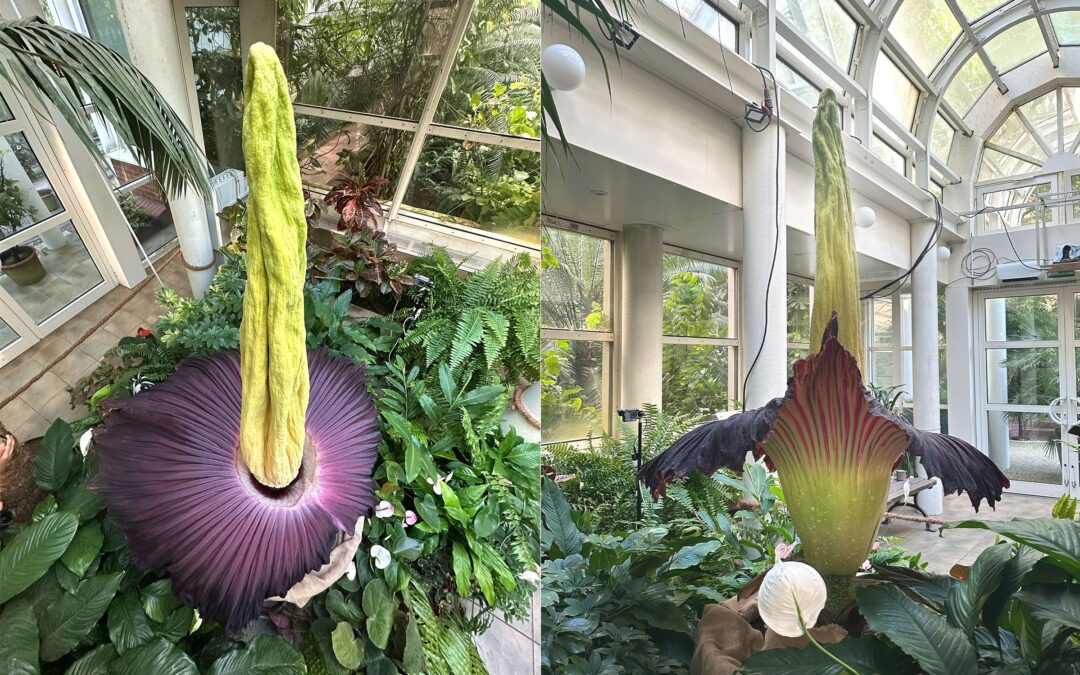Keep our news free from ads and paywalls by making a donation to support our work!

Notes from Poland is run by a small editorial team and is published by an independent, non-profit foundation that is funded through donations from our readers. We cannot do what we do without your support.
Visitors are flocking to the University of Warsaw’s botanical gardens for an extremely rare chance to see – and sniff – the institution’s titan arum, a giant and stunningly colourful plant that only blooms briefly once every few years and emits an odour similar to rotting flesh.
The plant, which is native to rainforests on the Indonesian island of Sumatra, is often informally known as the “corpse flower” due to its smell, which is designed to attract insects.
The botanical gardens announced this morning that its plant had begun blooming during the night. It is only the second time it has done so, the first being four years ago. Sometimes the interval between a titan arum’s flowering can be up to ten years.
Since they opened to the public this morning, the gardens have been visited by large numbers of people keen to see the flower. The university has extended its normal opening hours to 10 p.m. to accommodate the crowds and has also set up a live stream on YouTube showing the plant.
The botanical gardens’ titan arum is now much larger than when it last flowered, standing at around 1.8 metres (5 feet and 11 inches) tall. After the plant began to open at around 1 a.m., it took eight hours to fully bloom.
During flowering, the plant heats up to around 37°C (99°F) and releases a powerful odour similar to rotting flesh that can spread over long distances. The smell and warmth attract insects that feed on or lay eggs in rotting meat. They then act as pollinators for the plant.
Staff at the gardens had been expecting the titan arum to bloom in early August after it experienced rapid growth between 19 July, when it measured 80cm, and 4 August, by which time it had reached 181cm. In its natural habitat, the plant can even reach 3 metres in height.
Visitors wishing to see the rare spectacle should do so quickly, because the plant only blooms for up to a few days, botanists from the university told Polsat News.

Notes from Poland is run by a small editorial team and published by an independent, non-profit foundation that is funded through donations from our readers. We cannot do what we do without your support.
Main image credit: Ogród Botaniczny Uniwersytetu Warszawskiego/Facebook

Daniel Tilles is editor-in-chief of Notes from Poland. He has written on Polish affairs for a wide range of publications, including Foreign Policy, POLITICO Europe, EUobserver and Dziennik Gazeta Prawna.



















